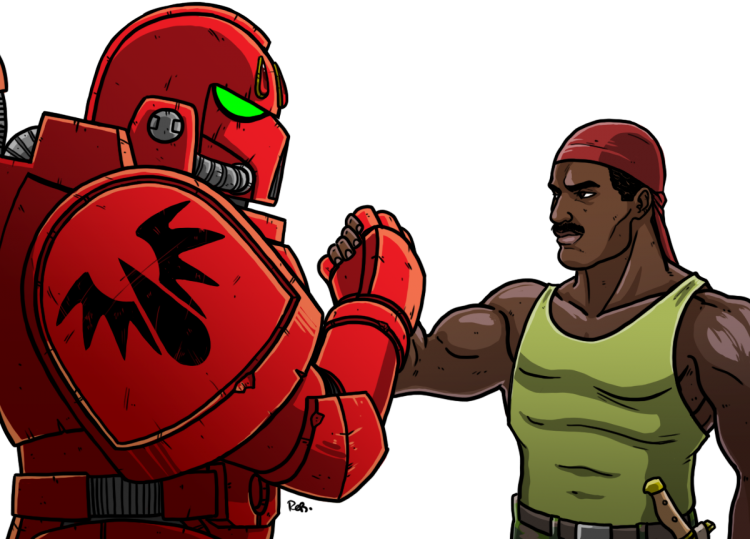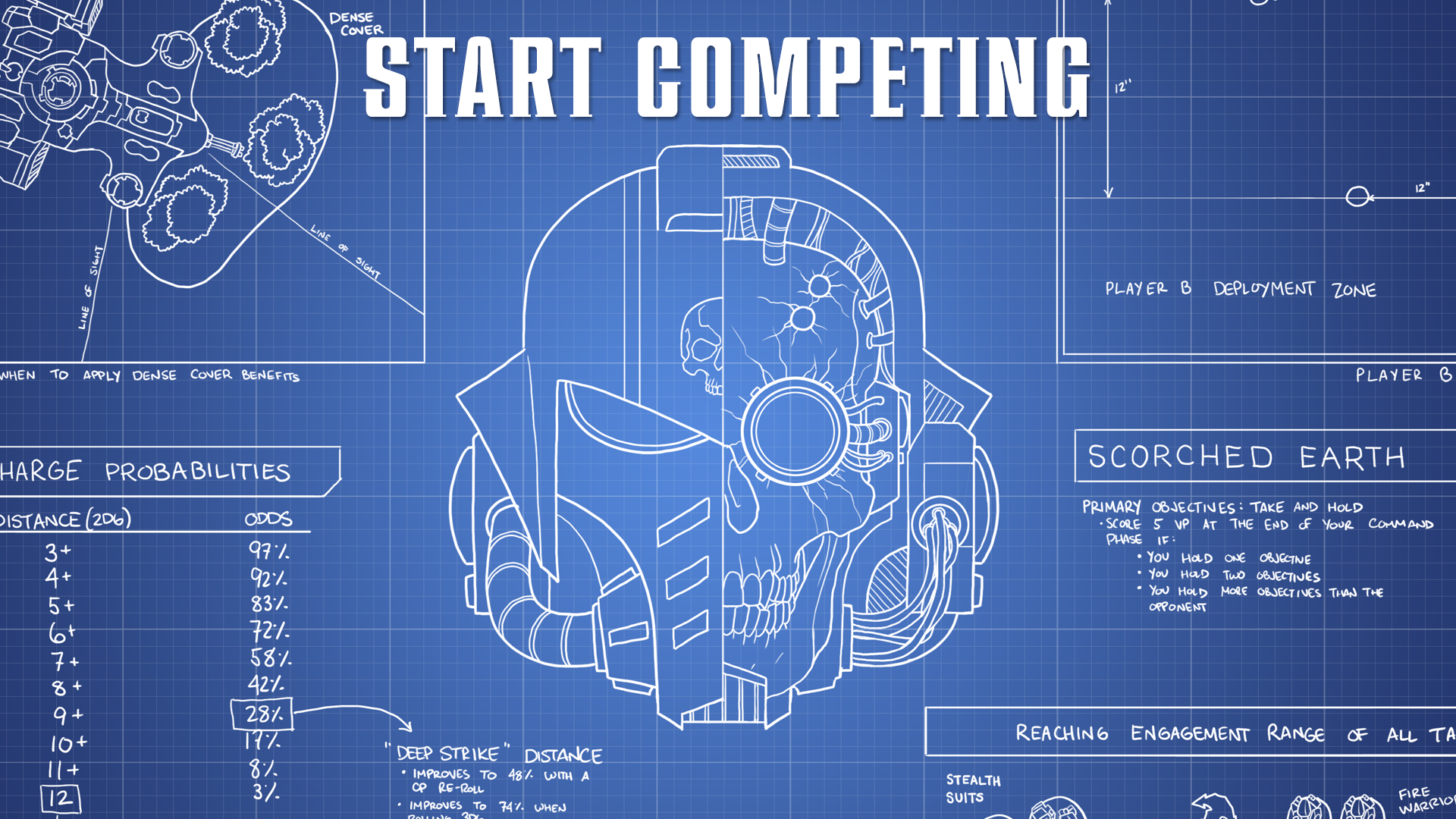Today I want to take a different tack on competitive play and focus less on tournaments and more on building a community that can cultivate a strong competitive scene in your area. Building a strong community requires a lot of different elements to come together. You need clubs/teams to form around, an inviting and supportive culture, and you’ll need access and opportunity for players. In the near future I’ll look to expand on these elements of competitive community building but today I want to focus on that last part, access and opportunity. I’ll examine this challenge through the lens of league play.
What Is a League?
A league is a general term for any loose affiliation of individuals/groups that are united in a common goal or in the case of games/sports, regularly play one another. In our context, leagues represent a way to place a defined structure around what is otherwise a series of one-off games between members. In most cases leagues will take a similar form to a Best Coast Pairings-coordinated tournament in terms of the structuring, administration, and reporting. In execution, however, they will function more like a “season” with the option for a playoff that will all run over a period of weeks to months instead of just a few days. The reality of leagues is that there are no functional limits to players, rounds, or even length of time that a league might run.

Why Leagues Are Important
So much of what enables the competitive aspect of Warhammer is simply about access and opportunity for play. Access can be defined as the time, money, and infrastructure required by a player to play the game – but for competitive play this goes well beyond the army and painting and one-off game investment that is typical of hobby games. For a player, even at the lowest level of competitive play there can be significant time and money spent on all-day events, travel, hotels, tournament fees, and paid or unpaid time off from work. For organizers the investment can be even greater as they must dedicate even more thought, time, and money to coordinating venue availability, space, tables, terrain, storage, marketing and more that all makes up the critical infrastructure of a competitive community. Most commonly tournament organizers are store owners or independent individuals who have partnered with store owners to provide that infrastructure – but for many players, particularly outside of large cities, a hobby store may not exist for many miles. For a competitive community to thrive the combination of players, organizers, and access all need to be aligned in order to create the space for opportunity.
Luckily, league play can solve a lot of these challenges and facilitate meaningful, competitive play by providing a low cost, low infrastructure, low commitment opportunity for both players and organizers alike to create to battle it out on the tabletop. Ultimately, leagues can help to cultivate the kind of participation and growth of a community that can heavily impact the formation of clubs and teams, and drive a healthy culture of competition.
How A League Can Mitigate Access Challenges
The most obvious advantage to a league is that it creates a distributed model for gameplay. There are no necessary requirements for location, date, or time except those that are agreed upon by the members of the league itself. While generally speaking the league will want to establish ground rules for carrying out the games (missions, terrain, or otherwise), this isn’t strictly required and the league can be as loose or structured as the group determines is good for their own circumstances. This means a couple of things:
- You are freed from the infrastructure requirements of hosting multiple tables and multiple sets of terrain at once
- You are freed from the fixed time constraints of a tournament as well as the time commitment of multiple games in a day
Because the games are played in a one-off format rather than everyone all at once, individual players can determine when and where they would like to play their game. This can be at a local store but it can also be some other public place or even in the home of one of the players or members. Moreover, the game can be played on the schedule of the two players competing – determining for themselves when the game should be completed. This could be a weekend, but it could also be the weekday, before or after work, late at night, whatever makes sense for them. As a result, the burden of access is significantly lower than that for even a small, local RTT.
There are also several ancillary benefits to this format. Because the pressure of place and time is so reduced on the player and organizer, a league game is also a much lower intensity affair and thereby far less intimidating for new players. It serves as an excellent onramp for people seeking to enter into competitive play because they can do so at their own leisure while still playing quality games against tournament players who can provide some personal coaching and guidance in an unhurried, casual setting. Similarly, for the ‘sometimes’ or casual-competitive crowd, leagues offer a structured form of practice that they can use to hone their skills and understanding of the game.
On the other end of the spectrum, leagues allow experienced tournament players to take a step back from the barrage of weekend events while remaining engaged in the game in a meaningful way. They can play a steady pace of games, try out new lists or ideas, and otherwise remain engaged in the community while not actually attending any weekend events.
More than anything, a league is a way for the community to grow together and create new opportunities over time. It’s a way to organize and participate in structured play without the challenge of an organized weekend event.

How to Start a League
Enough about the idea behind league play, let’s discuss the nuts and bolts of organizing one – what does it actually mean? Like anything that involves more than one person, the first thing you’ll need is someone willing to take charge and do the leg work of coordination and organization to get the league started. If you’re reading this and thinking, “I wish we had a league around here.” then maybe that someone is you. Fortunately, I’ve provided a helpful guide on everything you need to get started as well as an example at the end:
- A tournament pairing system (Best Coast Pairings TO app or similar)
- Coordination system (Discord, Messenger, carrier pigeon)
- League Rules
- Players
- Your Mitts
That’s it! There’s a bit more nuance to some things that we’ll step through, but infrastructurally, all you need is what’s listed above.
League Coordination
In terms of infrastructure there’s two things you need. Tournament pairing and a method of communication. Best Coast Pairings Tournament Organizer app available on Android or Apple is the standard tournament application. If you’ve never used the TO app before (different from the player app) there is a slight learning curve, but the key to understanding is that the placing and pairing metrics are different and you will want to adjust the defaults on both – please see my prior articles on this. After playing around with it for 15-30 minutes and trial/erroring a couple of dummy events you should have the hang of the system but there’s also plenty of veteran TOs you can reach out too that will more than likely be happy to assist.
Perhaps more important is how you’re going to communicate with the league – so much of community building is socializing, so a method of communication is critical! This can be as simple as exchanging phone numbers and texting each other in the league, but more likely you’ll want to establish a Discord server (recommended) or a Messenger group that can be a more long-term solution over multiple iterations of the league and where people can come and go as they please. It will make central administration a lot easier as you can create space for general discussion as well as league discussion.
League Rules
This is the area where you and the members can make the league your own. You get to determine everything from the structure, number of rounds, what system of the game you want to use, to what missions, what standards apply, how long the league will run, and how long the round lengths are (if applicable). In terms of structure, you really have two options:
- Tournament League
- Seasonal League (recommended)
- Pod League
The former is a defined number of rounds with the winner being chosen by whichever placing system you choose to apply at the conclusion of the defined number of rounds. It is simple and straight forward. The second is a bit more interesting in that it creates different options for play. It includes the defined round limit of a tournament league, but then at its conclusion adds a seeded playoff. This allows you flexibility in how you pair your players during the season since the season’s result is only meaningful for playoff entry. The pod type league operates more like a series of individual tournament brackets in which top-performing players in each pod can move up while poorer performing players will move down. This is more interesting for professional systems, but for community-building purposes a pod system will tend to lock players into pods that won’t expose them to the broader league.
If you’re playing a tournament style, you should lean towards the standard swiss-pairing that will see people play individuals who have the same W/L record as themselves and results in an overall winner through an undefeated path. This requires pairing the next round only after the previous has finished – because the next round pairing is dependent on the outcome of the prior round. However, if you pursue a season or pod system, you have other interesting options. You can choose to randomly pair each and every round at the start of the event. This sounds nonsensical, but you must keep in mind that the ‘season’ doesn’t mean anything except to seed the playoffs. As a result, this is my recommended method for pairing rounds because the big advantage is that it gives players who may not get to play their local ‘top’ players a chance to do so after rounds one or two. It helps those players to better understand the game and grow your community overall – which is the whole point.
Leagues may often run for months at a time, but the length overall should be determined by the number of rounds you intend to play. Whether you want to pair players each round (swiss-system) or randomize all the games all-at-once at the league start, a good rule-of-thumb is two weeks per round. As mentioned, a big disadvantage of pairing players one round at a time (swiss-style) is that it can result in a slowdown of the league where players who have finished their game for the period are awaiting the other matchups to finish before the next round can be paired. By pairing all the players randomly at the start of the season you give people a lot of flexibility to both live their lives and schedule their games. Bear in mind that people will take vacation, have busy weeks, etc – life happens.
The number of rounds is at your discretion, but in either league type, I recommend using 5-6 rounds at minimum for randomly paired leagues. For strict tournament style leagues, simply use the number of rounds that results in a single undefeated player. In terms of the placing system, see my aforementioned article links, but I highly recommend that for league play of 5+ rounds that you utilize W/L -> Opponent Game Win Percentage -> Differential or W/L -> Differential -> Opponent Game Win Percentage to drive your placing results. Particularly in a league setting, which is more relaxed, you’ll want to avoid the awful Battle Points tiebreaker at all costs due to the significant disadvantages (particularly in ‘talked out’ games which is fertile ground for cheating the scores).
Due to the length of time that a league can run it is common to allow permissive rule sets (adoption of new rules, dataslates, armies, etc) upon their release. Similarly, allowing players flexibility in their list building is common – though in practice you may want to consider some minimum limitations to provide stability and encourage players to hone their understanding of a faction. How prescriptive you are with terrain, missions, etc is entirely up to you – after a season or two you may find you’ll want to adjust to be more or less prescriptive, but ultimately it’s about what the community needs.
That’s really it! Below is an example from the Frozen North League that Scott Blegen has excellently and diligently administered since it’s inception. The below is a result of an evolution and trial-and-error resulting in the current form. I think it can be a helpful guidepost for you on creating your own league setup.
Frozen North League Rules - click to expand
Final Thoughts
Here in Twin Cities, the Frozen North Gaming club has been running a league for multiple years. Currently in its 13th season it has provided an opportunity for members of the community and the club alike to practice and test out new lists, stay engaged in competitive play, and meet new people. Beginning with fewer than 10 players, the league has swelled to over 40 players today, only half of which are members of the club. It has served to provide community members with top-level competition and has provided the Frozen North club with a way to reinforce positive competitive behaviors for the newer players in a low-stress environment. For me personally, the Frozen North leagues are my favorite part of the competitive calendar year and something I look forward to as I slow my competitive pace over the rest of this year.
Have any questions or feedback? Drop us a note in the comments below or email us at contact@goonhammer.com.


